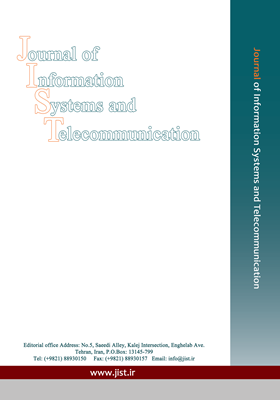Data Aggregation Tree Structure in Wireless Sensor Networks Using Cuckoo Optimization Algorithm
Subject Areas : Wireless NetworkElham Mohsenifard 1 , Behnam Talebi 2 *
1 - Islamic Azad Tabriz University
2 - Tabriz Branch, Islamic Azad University
Keywords: Wireless Sensor Networks (WSNs) , Data Aggregation Technique , Data Aggregation Tree , Cuckoo Optimization Algorithm (COA) , Network Lifetime Enhancement,
Abstract :
Wireless sensor networks (WSNs) consist of numerous tiny sensors which can be regarded as a robust tool for collecting and aggregating data in different data environments. The energy of these small sensors is supplied by a battery with limited power which cannot be recharged. Certain approaches are needed so that the power of the sensors can be efficiently and optimally utilized. One of the notable approaches for reducing energy consumption in WSNs is to decrease the number of packets to be transmitted in the network. Using data aggregation method, the mass of data which should be transmitted can be remarkably reduced. One of the related methods in this approach is the data aggregation tree. However, it should be noted that finding the optimization tree for data aggregation in networks with one working-station is an NP-Hard problem. In this paper, using cuckoo optimization algorithm (COA), a data aggregation tree was proposed which can optimize energy consumption in the network. The proposed method in this study was compared with genetic algorithm (GA), Power Efficient Data gathering and Aggregation Protocol- Power Aware (PEDAPPA) and energy efficient spanning tree (EESR). The results of simulations which were conducted in matlab indicated that the proposed method had better performance than GA, PEDAPPA and EESR algorithm in terms of energy consumption. Consequently, the proposed method was able to enhance network lifetime.

